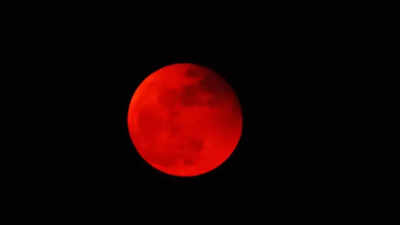ARTICLE AD BOX

Seems like the moon hasn’t been so bloodied ever before!On September 7, 2025, skywatchers around the world were treated to a mesmerizing celestial display: a total lunar eclipse, popularly known as a Blood Moon.
As Earth’s shadow swept across the full moon, it glowed a deep, haunting red – the result of sunlight bending through Earth’s atmosphere.
This 80-odd minute-long rare astronomical event captivated billions, an unforgettable moment that blended science with human awe. And now, all of us have the same question: when again?
The bright red spot on the vast sky!
The total lunar eclipse spanned from late September 7 into early September 8, 2025 (UTC), with the penumbral phase beginning at 15:28 GMT, totality lasting an impressive 82 minutes from 17:30 to 18:52 GMT, and the eclipse wrapping up by 20:55 GMT.
This marked the second total lunar eclipse of 2025, following the March event.This time, the visibility was astounding. Around 85% of the world’s population, nearly 7 billion people, had a chance to witness at least part of this cosmic performance, which left them stunned and wanting more!
Why it's called a ‘Blood Moon’
This dramatic name comes from the Moon’s reddish transformation during totality. When Earth blocks direct sunlight, only light refracted through our atmosphere reaches the lunar surface.
Rayleigh scattering strips away shorter blue wavelengths and lets red light bathe the Moon in a haunting, crimson glow. Scientifically, while ‘Blood Moon’ isn’t a formal term, it captures the imagination and vividly describes this rare lunar phenomenon.In India, the lunar eclipse began around 8:58 p.m. IST, totality lasted from 10:00 p.m. to 11:22 p.m., peaking at 11:48 p.m. and ending at 1:25 a.m. Meanwhile, in Australia, it started early morning, with totality between 3:31 a.m.
and 4:53 a.m. AEST. Some eastern regions missed the finale as the sun rose. On the other hand, in the United Kingdom, the moon rose already eclipsed around 7:30 p.m. BST, peaking at 7:33 p.m.
, ending by 9:55 p.m.
The totality phase, i.e., the moon’s complete immersion in Earth’s darkest shadow, lasted approximately 82 minutes, an unusually long show of lunar drama.
When’s the next Blood Moon?
Missed this year’s stunning lunar eclipse? Don’t worry! Although it truly has been a magical phenomenon to unfold in the sky, good news for all of us – the stellar lunar show is coming back next year!Looking ahead, the next total lunar eclipse, another ‘Blood Moon’, is set for March 2-3, 2026. For those in North America, this will be especially exciting: after missing the September 2025 eclipse, observers there will get a front-row seat to the glow of the next one.So, keep your binoculars and tripod ready! In six months, y’all have a stunning sky show to catch!
Mars opposition, Lunar Eclipse: Double celestial treat this month



.png)
.png)
.png)
















 4 days ago
4
4 days ago
4








 English (US) ·
English (US) ·